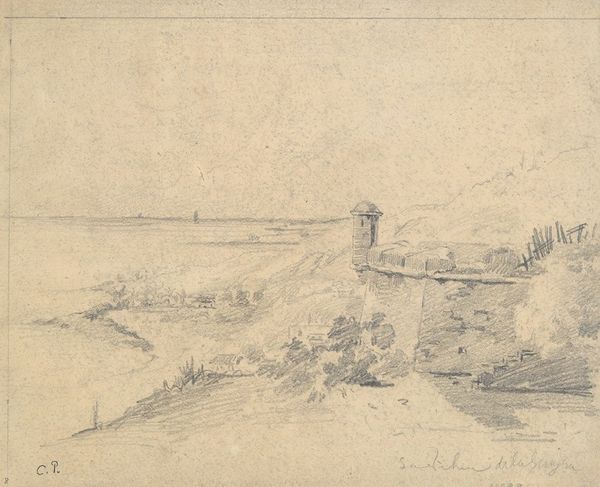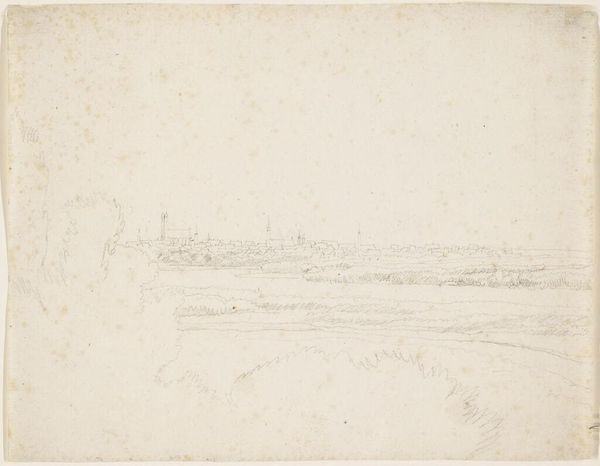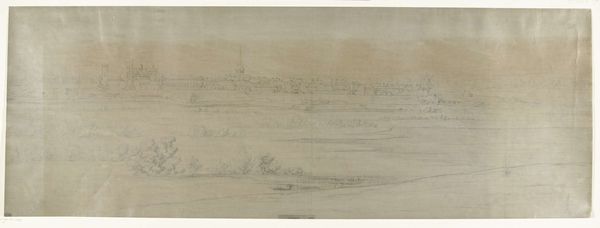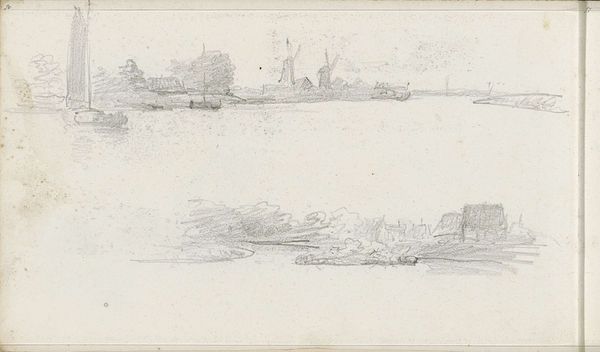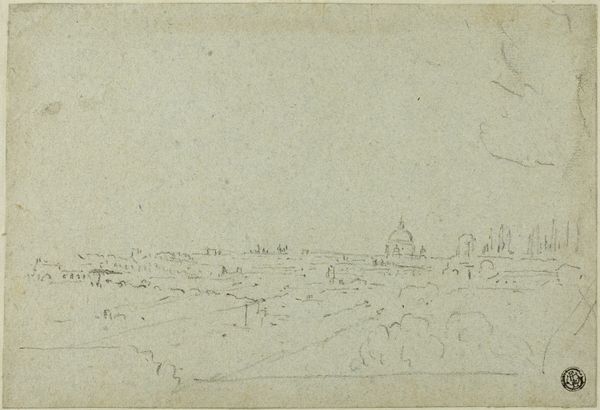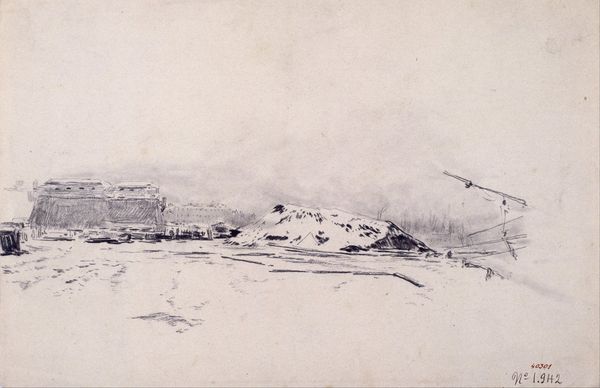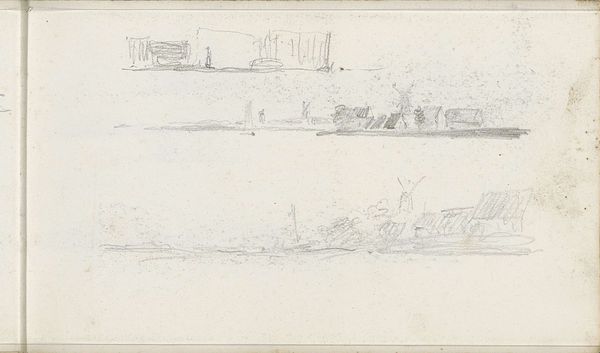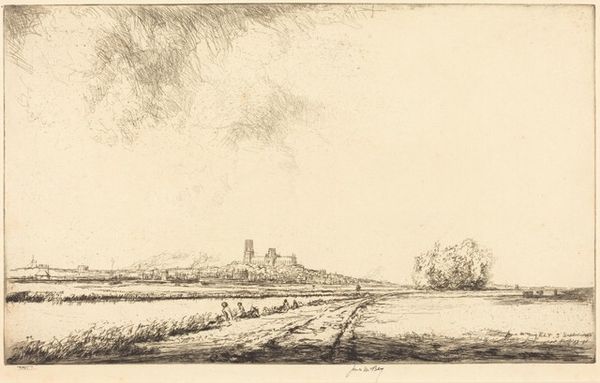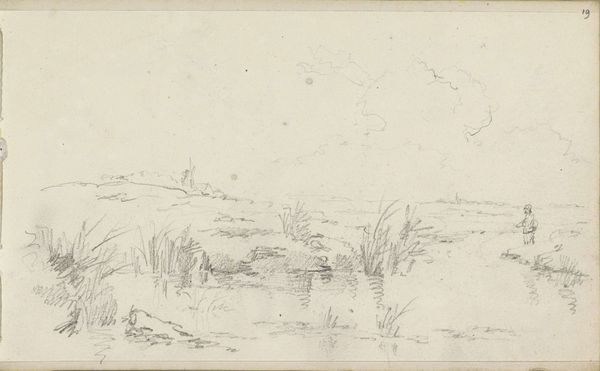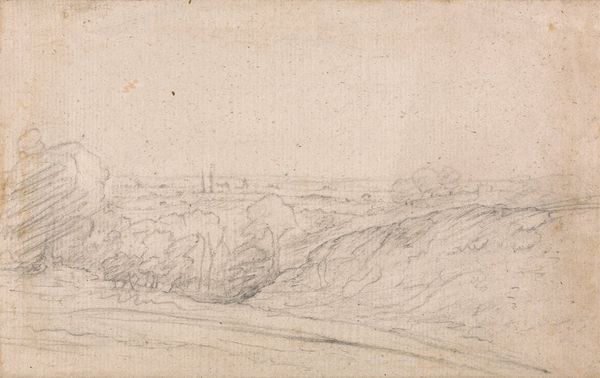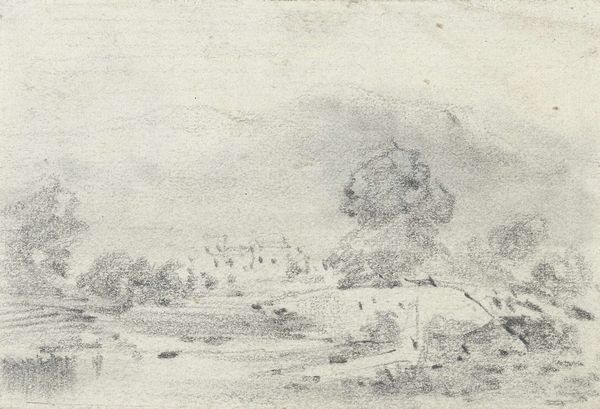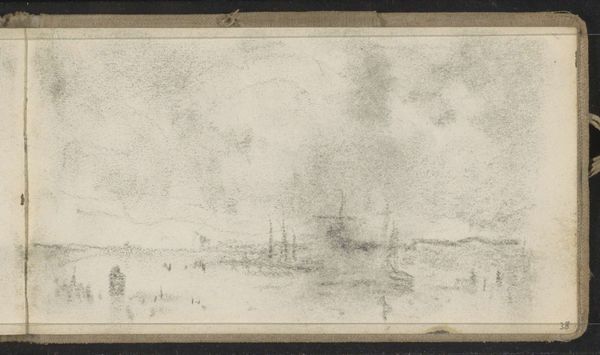
Dimensions: height 57 mm, width 164 mm
Copyright: Rijks Museum: Open Domain
Editor: So, this is Maxime Lalanne's "Landschap met water," a pencil drawing from between 1837 and 1886, housed at the Rijksmuseum. It has this wonderfully quiet, almost melancholic feel to it. What draws your eye when you look at it? Curator: For me, this seemingly simple landscape opens a window onto complex power dynamics. Consider the late 19th century—a period of intense industrialization and urbanization. Artists like Lalanne, in their rendering of the "natural," often participated in constructing an idealized vision of rural life. Editor: So, the artist isn’t just representing a landscape, but also participating in a particular discourse? Curator: Precisely! The very act of selecting, framing, and meticulously depicting this scene pushes back against the encroachment of modernity. Ask yourself, who benefited from this romanticized view of the countryside? And whose stories were being erased in the process? Think about land ownership, class divisions, and the environmental impact of industrial growth—all subtly implicated here. Editor: I see what you mean. It's easy to get lost in the beauty of the scene without thinking about the social context. Curator: Exactly. Look at the "naturalness" closely; is it truly untouched, or is it subtly cultivated? Consider the relationship between the viewer, the artist, and the land itself. Who has access? Who is excluded? Editor: It makes me think about how landscape art can reinforce ideas about belonging and exclusion. I initially just saw a pretty drawing. Curator: And that's okay! But engaging with the socio-political dimensions of even the quietest landscape encourages us to think critically about the world around us. This is a piece of land; the water is necessary for growing crops or the mobility of raw material; therefore this becomes more than an appealing, subdued picture. Editor: Thank you for opening my eyes. I never would have seen it that way on my own. Curator: The beauty of art lies in its capacity to reflect ourselves and question our position in the world. There's always a dialogue between what we see and what's really at play.
Comments
No comments
Be the first to comment and join the conversation on the ultimate creative platform.

